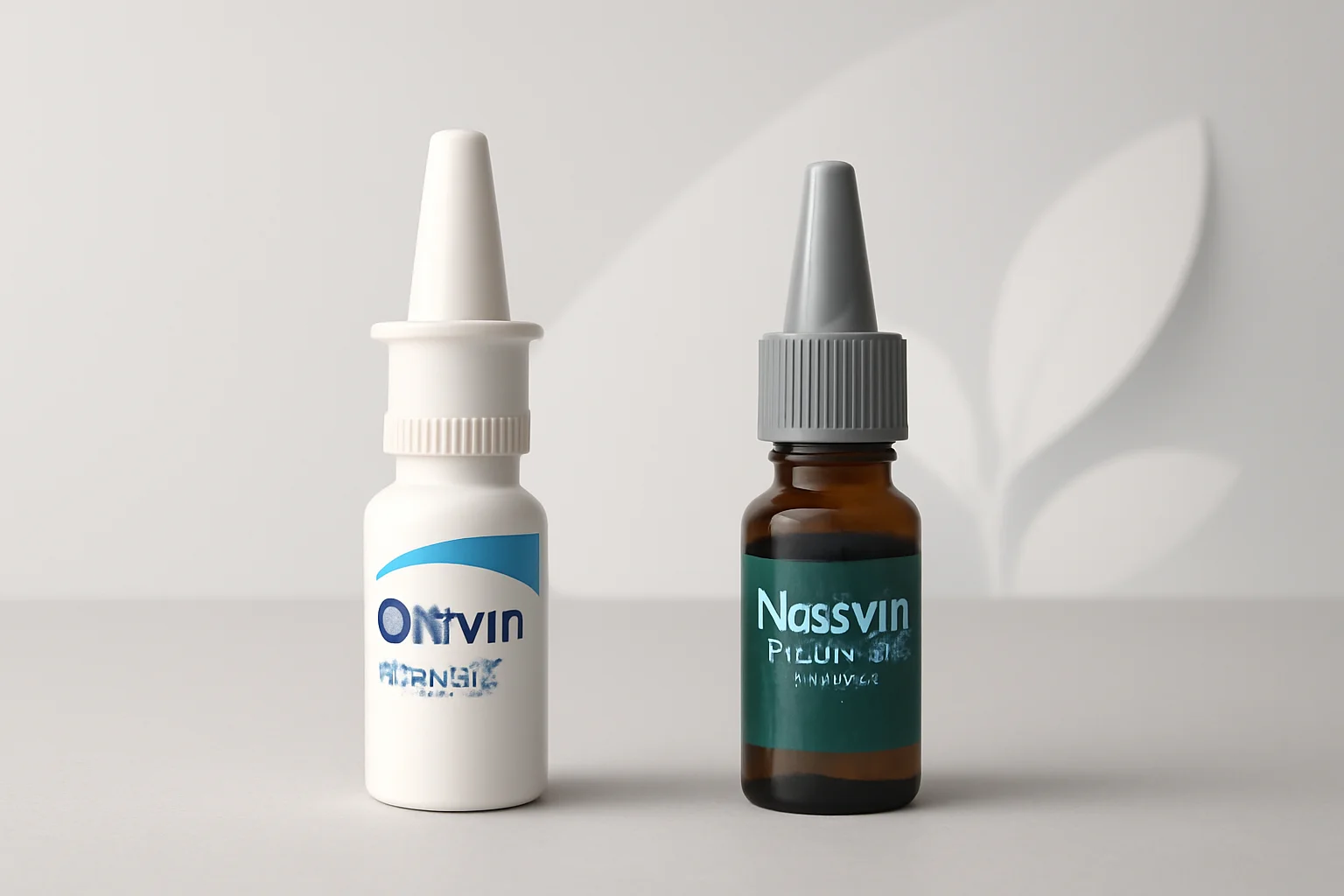
Otrivin or Nasivin: Which nasal spray is the better choice?
The respiratory problems, such as nasal congestion, colds, or allergies, can complicate many people’s lives. These symptoms often make daily activities difficult and reduce quality of life. In addition to proper medical treatment and home remedies, nasal sprays and drops available at pharmacies are popular solutions for alleviating unpleasant symptoms. Particularly, two popular products, Otrivin and Nasivin, frequently come up in conversations when it comes to treating nasal congestion.
Although both products aim to relieve nasal congestion, their mechanisms of action, ingredients, and usage instructions differ. Therefore, it is worth understanding thoroughly when and how each product can be used most effectively. The variety of different types of nasal drops and sprays can be overwhelming, making it important to be aware of the advantages and disadvantages of each product to make the most appropriate decision. With the right information, users can more easily determine which option is best for them.
The active ingredient and mechanism of action of Otrivin
Otrivin is a popular nasal spray whose active ingredient is xylometazoline. This compound belongs to the group of alpha-adrenergic agonists, meaning it causes the blood vessels in the nasal mucosa to constrict. When using Otrivin, xylometazoline is quickly absorbed and takes effect, thereby reducing swelling of the nasal mucosa and facilitating breathing.
The effect of Otrivin usually appears within 10-15 minutes and can last for up to 6-8 hours. Therefore, it can be particularly useful in cases of colds, allergic rhinitis, or sinusitis. Otrivin is available in different concentrations, such as the 0.1% version for adults and the 0.05% version recommended for children.
According to the usage instructions, Otrivin nasal spray should be applied a maximum of 3 times a day and should not be used continuously for more than 7 days, as long-term use can lead to damage of the nasal mucosa. When using the product, it is important to hold the bottle vertically and spray it into one nostril while closing the other nostril. This ensures even distribution of the active ingredient.
However, it should be noted that, like all medications, Otrivin can have side effects. The most common include local irritation, dry nasal mucosa, and sneezing. In rare cases, cardiovascular problems may also occur, especially in those who already have such conditions. Therefore, it is important to consult with a doctor if there are any questions regarding the use of the product.
The ingredients and benefits of Nasivin
Nasivin has a similar mechanism of action to Otrivin, as it is also an alpha-adrenergic agonist, with the active ingredient being oxymetazoline. This compound also causes the blood vessels in the nasal mucosa to constrict, thereby reducing swelling and facilitating breathing. The advantage of Nasivin is that its effect is generally faster and can last for 10-12 hours, which can be particularly useful for nighttime use.
Different forms of Nasivin are also available, including the 0.1% version for adults and the 0.05% version for children, as well as nasal sprays and drops. The nasal spray form provides easier use, while the drops allow for more precise dosing.
The recommended dosage for Nasivin is similar to that of Otrivin, a maximum of 3 times a day, and the duration of continuous use should not exceed 7 days. Before using the product, it is important to read the instructions carefully and pay attention to proper application to avoid discomfort.
Side effects can also occur with Nasivin, but they are generally milder than those associated with Otrivin. The most common complaints include dry nasal mucosa and local irritation. Those sensitive to the active ingredient may also experience allergic reactions. It is advisable to pay attention to the body’s reactions, and if any abnormalities are noticed, consult with a doctor.
Otrivin or Nasivin: Which is the better choice?
When choosing between Otrivin and Nasivin, several factors should be considered. Both products effectively reduce nasal congestion, but usage habits, the severity of symptoms, and individual sensitivities influence which product will be most suitable.
If someone desires quick and long-lasting relief, Nasivin may be the better choice, as its effect lasts longer and works faster. On the other hand, if one decides to use Otrivin, it is worth considering that while the effects are similar, the side effects may be more pronounced.
It is also an important consideration that users may show different sensitivities to the active ingredients. Some may tolerate Otrivin better, while others prefer Nasivin. Therefore, it is advisable to try both products, paying attention to the body’s reactions, and make a decision based on experiences.
It is important to mention that proper medical advice is always recommended, especially in cases of chronic nasal congestion or other respiratory problems. Additionally, alongside the use of these products, it is worth considering alternative treatment options, such as steam inhalation, saline nasal rinses, or various homeopathic remedies that can also help alleviate nasal congestion.
**Warning:** This article does not constitute medical advice. In case of health issues, please always consult your doctor!

